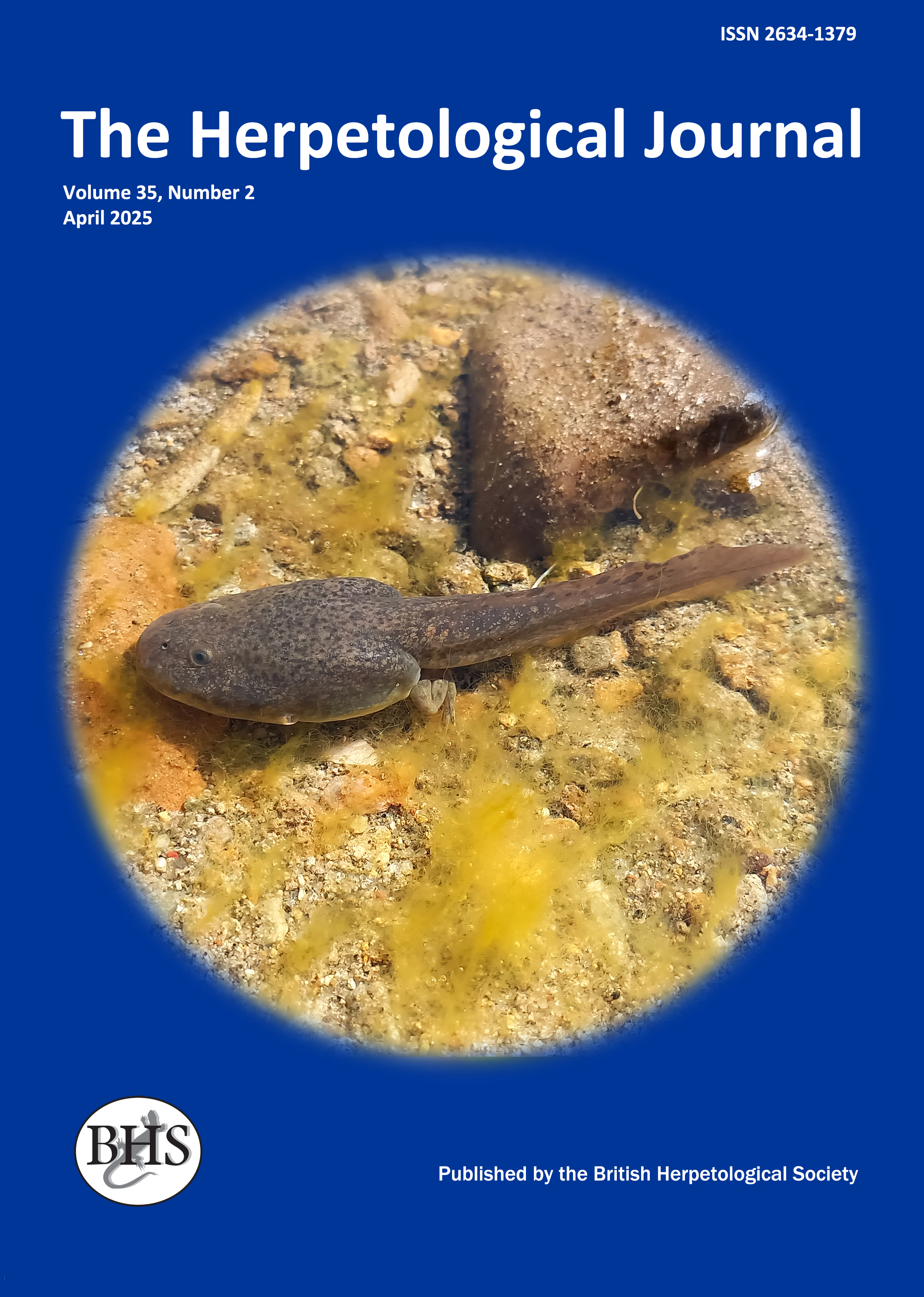
The Herpetological Journal
The Herpetological Journal is the Society's prestigious quarterly scientific journal. Articles are listed in Biological Abstracts, Current Awareness in Biological Sciences,Current Contents, Science Citation Index, and Zoological Record.
ISSN 0268-0130
2021 Impact Factor from Clarivate for the Herpetological Journal is 1.194, an increase of 0.332 from 2020.
pdf 03. Anuran temporal occupancy in a temporary pond from the Atlantic rain forest, south-eastern Brazil
1571 downloads
Open Access
pp. 115-122
Authors: Abrunhosa, Patrícia A.; Wogel, Henrique & Pombal, José P.
Abstract: Temporal distribution, reproductive mode and pattern, and calling activity were recorded for an anuran community during 13 months in a temporary pond in south-eastern Brazil. Nineteen species from four families (Bufonidae, Hylidae, Leptodactylidae and Microhylidae) were recorded at the pond. Hylidae was represented by the most species, followed by the family Leptodactylidae. The reproductive diversity of the community was represented by five reproductive modes, and three reproductive patterns (prolonged, explosive and opportunistic breeders). Reproductive temporal analysis showed an anuran succession along different conditions of the pond (dry, flooded, and drying pond), probably related to specific reproductive mode and physiological tolerance to temperature and precipitation. Leptodactylid frogs were the first breeders, reproducing before the pond filled up, followed by species that lay eggs in the vegetation above water, and lastly the largest aggregation of Hylidae took place. Stereocyclops incrassatus (Microhylidae) was the unique explosive breeder in the community, congregating in the pond just after the first heavy rain at the beginning of the rainy season. Multiple regression analysis showed that air temperature, pond depth, and weather condition were the best predictors to explain the calling activity in anuran species. Hylid and leptodactylid frogs responded in a different way to environmental factors: in general, positive associations for hylid frogs, and negative associations for leptodactylid frogs. There were also species-specific differences in chorus attendance related to environmental factors within each family.
Keywords: REPRODUCTIVE PATTERN, COMMUNITY, ANURA, SUCCESSION, BREEDING PATTERNS

